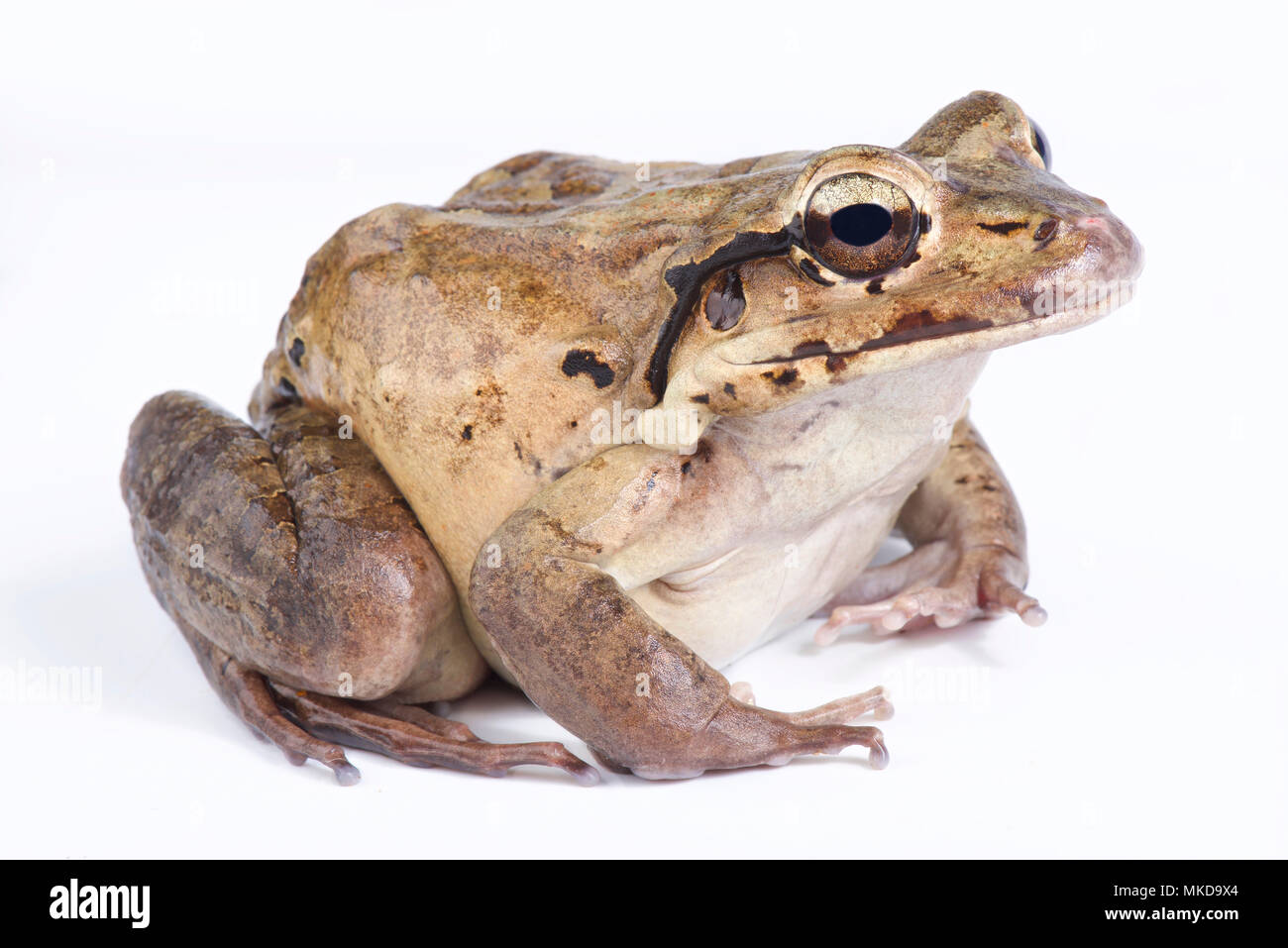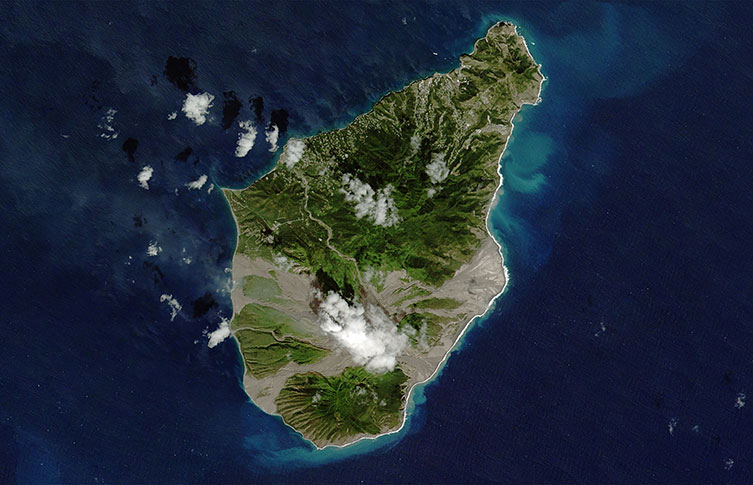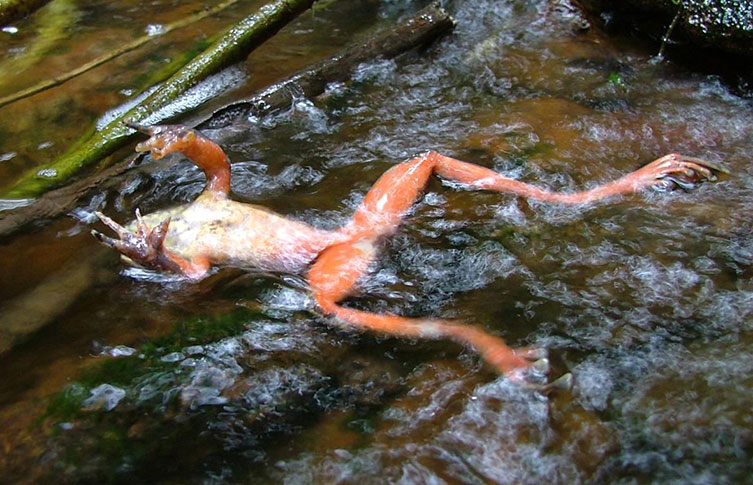The extinction risk for amphibians, which includes frogs, salamanders, and caecilians, is about 40% higher than it would be otherwise.
The mountain chicken frog is among them. Since 2002 their wild population has plummeted, leaving the species teetering on the brink of extinction.
The mountain chickens’ numbers may have gone down because of hunting, invasive species, and habitat loss, but it was the spread of a fungus that kills amphibians that really did them in.
The future of these critically endangered frogs is uncertain, but conservationists are hopeful that there may be a way to help the mountain chicken survive.
Many people have never heard of the mountain chicken (Leptodactylus fallax), which is a very interesting and unusual animal. The mountain chicken is not a bird, despite its name. This big frog can only be found on the islands of Dominica and Montserrat in the Caribbean. We are going to talk about what a mountain chicken is and what makes it so unique in this article.
An Overview of the Mountain Chicken
The mountain chicken is a type of frog. It belongs to the genus Leptodactylus and the family Leptodactylidae. One of the world’s biggest frogs, it can get up to 9 inches long and weighs more than 2 pounds. Its coloration is variable, ranging from brown to orange-yellow.
The meaty legs of the frog are what give this dish its name: “mountain chicken.” People on Dominica and Montserrat used to eat a lot of frogs, which is how they got their chicken-like name.
Sadly, the mountain chicken is critically endangered. The number of these animals has dropped by more than 80% since the 1990s because of hunting, habitat loss, natural disasters, and disease. Conservation efforts are underway to save the remaining wild populations.
Key Facts and Characteristics
Here are some key facts about the biology and behavior of the mountain chicken:
-
It is a terrestrial and nocturnal frog that ambushes prey by remaining still for long periods before suddenly attacking.
-
Its diet consists of insects, spiders, crabs, lizards, snakes, and even bats and small mammals.
-
Mountain chickens create foam nests in underground burrows for breeding. The female lays up to 25,000 eggs and feeds the hatched tadpoles with unfertilized eggs.
-
Males make a distinct “whooping” call to attract females during the breeding season.
-
They can live up to 12 years in the wild.
-
Females are larger than males and can be distinguished by the lack of black spurs on their thumbs.
Habitat and Distribution
The mountain chicken is native to only two Caribbean islands:
-
Dominica It once inhabited the entire island but is now restricted to the western side It is found in forests, plantations, ravines, and palm groves near streams.
-
Montserrat: The population here has been decimated by volcanic eruptions. Only a few individuals remain in the Centre Hills region.
Historically, the frog inhabited other Lesser Antillean islands like Guadeloupe and St. Kitts and Nevis. But it has been extirpated from these locations and now only survives on Dominica and Montserrat.
Major Threats Facing the Species
The mountain chicken has experienced catastrophic declines over the past few decades due to a combination of major threats:
-
Hunting: Historically hunted as food, current bans exist but illegal poaching continues. As a large, loud, slow-moving frog, it is easily targeted.
-
Habitat loss: Agricultural development, human settlement expansion, pollution, and volcanic eruptions have destroyed habitat.
-
Invasive predators: Non-native animals like pigs, dogs, and cats prey on the frogs.
-
Disease: The chytrid fungal disease has decimated populations since the 2000s. It spread rapidly and can kill frogs in just days.
-
Natural disasters: Hurricanes and volcanic eruptions have severely damaged habitats.
Conservation Efforts Underway
Given the precarious state of the remaining mountain chicken populations, intensive conservation efforts are needed. Some current initiatives include:
-
Captive breeding programs in zoos, with frogs reintroduced to the wild in Montserrat.
-
Monitoring wild populations and controlling disease outbreaks.
-
Habitat protection and restoration.
-
Raising public awareness and enforcing hunting bans.
-
Research on biology and disease mitigation.
-
Creating protected reserves free of predators and development.
Why the Mountain Chicken Matters
The mountain chicken represents a one-of-a-kind frog species with unique adaptations found nowhere else in the world. Losing this animal would represent an enormous blow to biodiversity.
Frogs are also critical components of tropical ecosystems and excellent indicators of environmental health. Saving the mountain chicken is important for maintaining functioning island habitats.
This fascinating frog has an essential role to play in Caribbean nature and culture. Ongoing conservation efforts aimed at protecting the remaining populations of the mountain chicken provide hope that this important species can survive into the future.

The chytrid fungus in Montserrat
Nearly 60% of Montserrat is an exclusion zone, implemented after the Soufrière Hills volcano in the south of the island became active in 1995 after centuries of dormancy. Continued volcanic activity notably resulted in Montserrats capital, Plymouth, being abandoned. More than half the population have since left the island.

The volcanos eruptions also took their toll on the mountain chicken. The frogs used to be seen from the ocean to the 1,000-meter peak of the Soufrière Hills, but pyroclastic flows and ash falls probably destroyed many populations and their homes, leaving the species to live only in a small part of the islands’ Centre Hills reserve.
With the devastation of the species in Dominica, the best hope for the mountain chickens survival seemed to be in Montserrat, but by 2009 Bd was identified there, too.
Forestry officials and a local hunter observed large numbers of the typically nocturnal mountain chicken congregating around water in the daytime, as well as finding dead frogs. Sick-looking individuals displayed the clinical signs of chytridiomycosis, which can include lethargy, redness of the belly and legs, and muscle tremors.
Bd infections dont affect all amphibians in the same way. Some, like the mountain chicken, are highly susceptible. Others are more resistant and can act as disease vectors, moving the fungus from one area to another. On Montserrat and Dominica, the fungus is also known to be carried by eleutherodactylid frogs and cane toads.

Much of Montserrats fresh produce is imported from Dominica. Some people think that stowaway frogs infected with Bd could have been a way for the fungus to get to the island.
As was the case in Dominica, the arrival of Bd in Montserrat caused the mountain chicken population to crash. The last male and female were moved closer together with hopes of them breeding, but they were last recorded in 2016, leading the Montserratian population to be considered functionally extinct.
What is a mountain chicken?
One of the world’s biggest frog species is the mountain chicken (Leptodactylus fallax), which can get over 20 centimeters long and weigh up to a kilogram. They come in different colors, but most of the time they are reddish-brown with dark spots and a cream belly. This helps them blend in with the leaf litter where they live in the humid forests.

Mountain chickens used to be found on several islands in the Lesser Antilles, but now only occur on Dominica and Montserrat. The species was once abundant on these two islands, commonly hunted and eaten, and was even formerly an unofficial national dish in Dominica.
Until hunting seasons and bans came into force, its estimated that 18,000-36,000 mountain chickens were caught per year on Dominica. While there are no official records for Montserrats historical population, unpublished data shows that 1,043 frogs were harvested there in 1979, and 1,680 in 1980.
Also known as the Dominican white-lipped frog, giant ditch frog and crapaud, mountain chickens are culturally important, appearing in local folk songs, calypsos, poems and jokes. Their likeness is also included on Dominicas coat of arms.
There are several theories for the origin of the unusual common name, mountain chicken. It may be a reference to their large size or that they have been a food. It could also be due to their chicken-like, squawking alarm call.
Mountain chickens are carnivores with voracious appetites. They eat almost anything they can swallow, from crickets, millipedes and tarantulas to small vertebrates including geckos and other frogs.

They are also diligent parents with a unique reproductive strategy. Using a trilling call, a male mountain chicken will entice a female into a nesting burrow, where they mate and a foam nest is produced into which the female lays her eggs.
Tadpoles hatch in the nest and the males and female remain close by, aggressively defending their young as they develop. The female also produces thousands of unfertilised eggs that her young feed on. When the tadpoles metamorphose into juvenile frogs, they leave the nest to fend for themselves. Mountain chickens have a lifespan of about 12 years.
Mountain Chicken Frog | Curious Creatures
FAQ
What is a mountain chicken?
In summation, the mountain chicken, with its confounding nomenclature and extraordinary adaptability, emerges as an emblem of tenacity in the face of adversity. While formidable challenges loom large, the dedication of conservationists and scientific luminaries kindles a beacon of hope for its continuance.
Is a mountain chicken a frog?
The mountain chicken, despite its bewildering nomenclature, stands as a sizable species of frog, indigenous exclusively to the idyllic isles of Dominica and Montserrat within the Caribbean archipelago. These islands are a safe place for this one-of-a-kind amphibian resident, where it has evolved to fit in with its unique surroundings.
What does a mountain chicken taste like?
The mountain chicken actually refers to a species of giant frog native to the area. The legs, which form the basis of a dish, is considered Dominica’s national food. If you’ve ever had frog’s legs before, then you know that they indeed taste a lot like chicken.
Why is it called a mountain chicken?
The “mountain chicken” is called so because its meat is said to taste like chicken. Despite the name, it is actually a frog, specifically the Leptodactylus fallax, native to the Caribbean islands of Dominica and Montserrat. It’s also known as the giant ditch frog or crapaud.
Does mountain chicken taste like chicken?
Yes, it does taste like chicken and yes that’s how it got it’s name but people ate too many and the chytrid fungus came to town to kill off the rest. You will likely only ever see it in Montserrat or possibly Dominica but there are literally only around 8000 of these left anywhere in the world, so don’t eat it.
Can you eat a mountain chicken?
Mountain chickens are a culturally significant species in both Montserrat and Dominica. Mountain chicken was the national dish of Dominica until their decline, and were widely eaten in both Dominica and Montserrat before the chytridiomycosis epidemic.
What is mountain chicken made of?
The mountain chicken is a frog. It is in the same family as many other frogs, which is called Leptodactylidae. Their name comes from how big they are; this frog can grow to be 8 inches long and weigh 2 pounds. They build nests with foam they secrete for their eggs.
